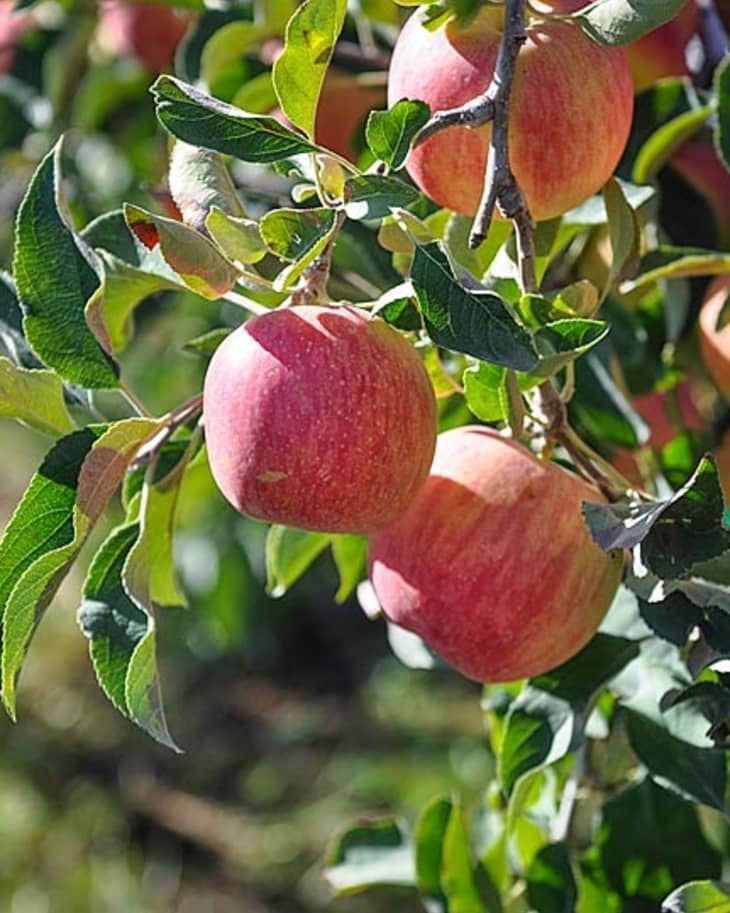From Orchard to Market: Come Along on an Apple Harvest!
Earlier this autumn, I was invited by Rainier Fruit Company to spend a day in their orchards, seeing how apples are harvested and brought to market. It’s an astonishing mix of old-school and modern — all the apples are picked by hand in orchards that don’t look much different than they did decades ago, but then they get scanned back at the sorting facility by computers that can spot that one sneaky bruised apple in a group of thousands. Ever wonder how that perfect, shiny apple wound up at your grocery store? It probably looked something like this.
At some point in our lives, we’ve all probably spent a Saturday happily picking apples in the golden autumn sunlight and anticipating a reward of hot cider and doughnuts. When it comes to the picking the apples that eventually arrive at our grocery stores and markets, take this picture and multiply it by a few orders of magnitude. Same basic concept, much bigger scale.
Newer apple orchards are usually planted in V-shaped trellises rather than the traditional squat trees. Growers found that this trellis system made it easier to support the weight of the apple limbs and growing apples. It also allows more sunlight to get to the fruits between the branches, and the apples are ultimately easier to pick.
About a month before harvest, reflective material is rolled between the rows of trees. This helps reflect sunlight and heat onto the lower parts of the trees and encourages the apples to ripen. Large fans throughout the orchards also help circulate air and keep the temperature even. This is especially important in the cool days of spring and the hottest days in the summer.
Growers tell when apples are ready by checking their sugar level (brix), checking their starch level, looking for the seeds to darken, and finally, by doing an old-fashioned taste test. Apples should be high in sugar and lower in starch by the time they’re harvested.
To harvest the apples, the reflective material is rolled to the sides and big bins are brought in to hold the picked apples. All the apples are picked by hand. Care must be taken to gently roll the picked apples into the bins to avoid bruising the fruits.
Once transported to the packaging facility, the first step is to check over the apples and sort them into groups. They are floated on water chutes; this helps prevent bruising of the delicate apples and also cleans them of dust and grit.
The apples pass under a scanner, which checks each apple for things like color, shape and roundness, bruising, and other physical deformities. Based on this information, they are sorted into separate chutes. The computer automatically pops the apple off the track and into the appropriate chute — it sounds like popcorn popping!
The sorted apples float down another chute to the storage bins. To avoid damage to the apples, the bins are submerged in water and then filled with floating apples. The bin is slowly lifted out of the water and the apples settle gently into place.
From here, the apples are stored in a refrigerated room kept just above freezing for anywhere from a few days to months. Some apples are ready right away, but others taste best if they’re allowed to sit for a little while. Cold storage mellows the harsh, tart flavors in these apples and allows time for their sugars to develop. This room smells amazing: like sweet apple cider perfume.
When they’re ready to go to market, the apples are taken into another packaging facility where they go through a final visual inspection. Each apple gets tagged with a sticker and then packaged by hand. Boxes are carried to the refrigerated shipping room to await delivery to store shelves.
It’s important for the apples to stay chilled during this whole process. Not only can warming cause the apples to spoil prematurely, but higher temperatures can also make them to turn mealy and lose flavor.
See what I mean about old-school meets modern?! And yet, at the end of the day, an apple is still an apple. Whether they’re baked in a pie or sliced for a snack, it’s one fruit I will never get tired of eating.
What’s your favorite apple?
(Information for this post was gathered during a press trip sponsored by Rainier Fruit Company. All views and opinions expressed in this post are the personal views of the author.)
(Images: Emma Christensen)
